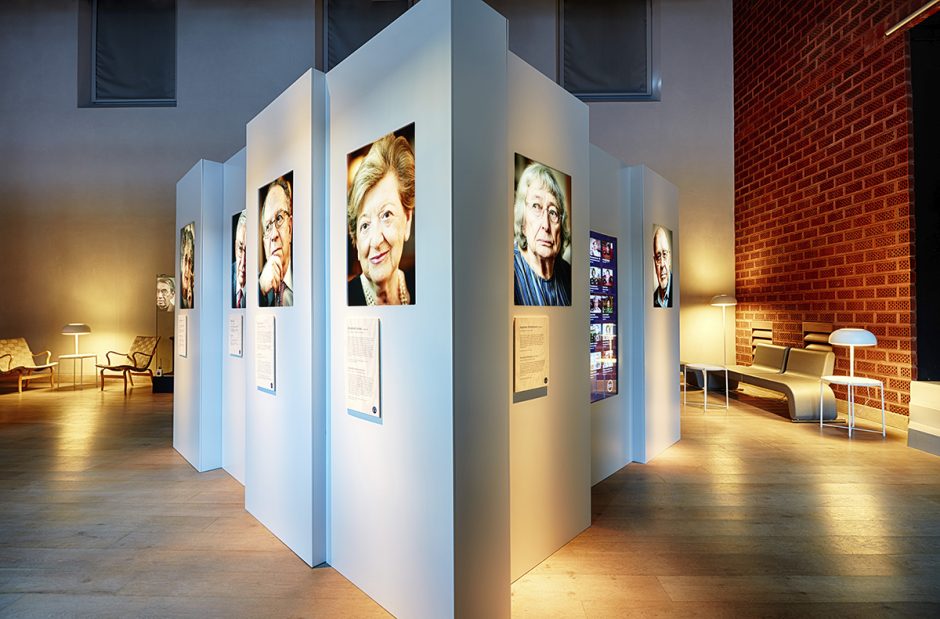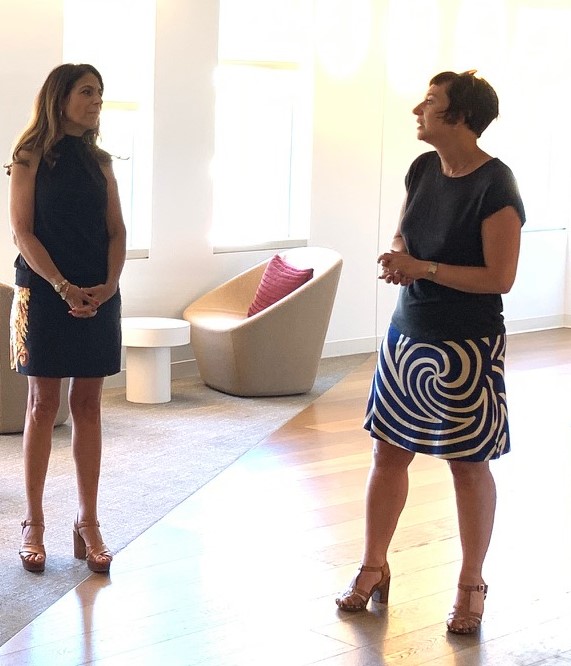Swedish History Museum’s first-ever Holocaust exhibit a success

Early this year, when the Swedish History Museum opened its exhibit about the Holocaust – an exhibit that includes USC Shoah Foundation testimonies and some of its interactive biographies – it marked the state-funded museum’s first foray into the topic.
The exhibit has been a major success, say two Swedish museum professionals who played a prominent role in the installation, and who came to USC Shoah Foundation’s headquarters in Los Angeles last week to discuss taking the partnership to the next level.
The exhibit opened in January and runs through Dec. 8, but Lizzie Scheja -- the director of Jewish Culture in Sweden, which created the exhibit -- says she doesn’t want the partnership to end there.
“This is the first step in my opinion to a larger, deeper cooperation,” she said during a casual meet-and-greet with USC Shoah Foundation staff last week. “This is something that we want to stay permanently in Sweden.”
Sweden’s Holocaust legacy is complicated. Although the country took in thousands of refugees during and immediately after World War II, it was also among the handful of European countries that remained neutral. What's more, the country exported valuable iron-ore to Germany, aiding the Nazis in their war effort.
At the USC Shoah Foundation on Friday, Katherine Hauptman – executive director of the Swedish History Museum – said some Swedes are quick to point out that the country was not in the war.

“But it is part of Swedish history, and Sweden did actually do different things that affected how the war went,” she said.
Scheja added that having the exhibit at a general-audience museum – as opposed to a Jewish museum – widens the reach of the exhibit.
“The museum has great turnout,” she said. “That allows other people who may never have dreamed about going to such an exhibition to see it.”
Called “Speaking Memories – The Last Witnesses of the Holocaust,” the exhibit focuses on Holocaust survivors who resettled in Sweden after the war. It includes close-up portraits of survivors along with clips of their video testimonies.
Its January launch marked the European debut of Dimensions in Testimony – a cutting-edge program that enables people to ask questions of a Holocaust or genocide survivor on a life-size screen, prompting real-time responses from the pre-recorded video interviews.
Hauptman said the Dimensions in Testimony exhibit – featuring the interactive biographies of Holocaust survivors Pinchas Gutter and Eva Schloss, the posthumous stepsister to Anne Frank – has not only been a big draw, but also made museumgoers less shy about asking survivors difficult questions.
“They often say … ‘I met a survivor, and I had more questions. I didn’t have the courage to ask because I didn’t know if I would hurt this person again by asking them this,’” she said. “But with Dimensions in Testimony, I know that this person had approved that he will tell this. And if he doesn’t have an answer, that’s fine. But I can have the courage to ask this. So now I know a lot more.”
As a part of the partnership, the Swedish History Museum became a subscriber to USC Shoah Foundation’s Visual History Archive, which contains 55,000 video testimonies of surivors of the Holocaust and other genocides.
Scheja said the Swedish prime minister, Stefan Lofven, has launched an initiative to open a permanent Holocaust museum or exhibit in some form in Sweden. She said she hopes the Swedish History Museum – and USC Shoah Foundation – can be a part of it.
“We don’t want to lose that momentum,” she said. “I think it’s very urgent to make a move now.”